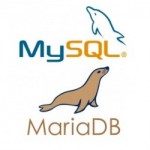
SATA is the most common bus interface on desktops and on many servers, so it’s important that you know some basic concepts about it, from the always informative Wikipedia:
Serial ATA (SATA) is a computer bus interface that connects host bus adapters to mass storage devices such as hard disk drives and optical drives. Serial ATA replaces the older AT Attachment standard (ATA; later referred to as Parallel ATA or PATA), offering several advantages over the older interface: reduced cable size and cost (seven conductors instead of 40), native hot swapping, faster data transfer through higher signalling rates, and more efficient transfer through an (optional) I/O queuing protocol.
Revisions
Revision 1.0a was released on January 7, 2003. First-generation SATA interfaces, now known as SATA 1.5 Gbit/s, communicate at a rate of 1.5 Gbit/s, and do not support Native Command Queuing (NCQ).
Second generation SATA interfaces run with a native transfer rate of 3.0 Gbit/s, and taking 8b/10b encoding into account, the maximum uncoded transfer rate is 2.4 Gbit/s (300 MB/s). The theoretical burst throughput of SATA 3.0 Gbit/s is double that of SATA revision 1.0.
Serial ATA International Organization presented the draft specification of SATA 6 Gbit/s physical layer in July 2008 and ratified its physical layer specification on August 18, 2008. The full 3.0 standard was released on May 27, 2009. It runs with a native transfer rate of 6.0 Gbit/s, and taking 8b/10b encoding into account, the maximum uncoded transfer rate is 4.8 Gbit/s (600 MB/s).
In short they are usually referred as:
SATA revision 1.0 – 1.5 Gbit/s – 150 MB/s
SATA revision 2.0 – 3 Gbit/s – 300 MB/s
SATA revision 3.0 – 6 Gbit/s – 600 MB/s
So which revision are you using on your computer ?
Continue reading »



